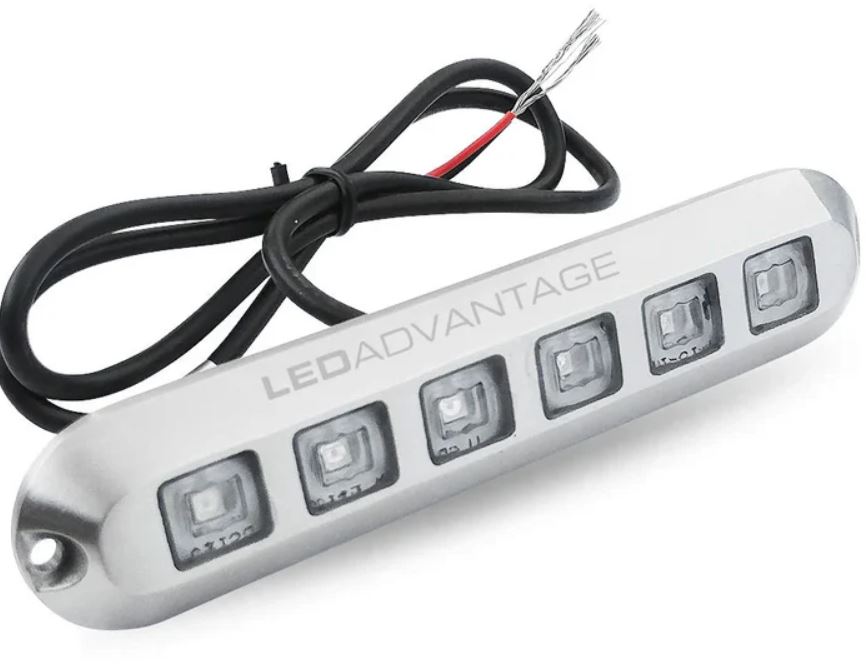Boating enthusiasts, both novices and seasoned sailors alike, are continuously seeking ways to elevate their maritime experiences. One such enhancement gaining popularity is the installation of underwater LED lights on boats. These vibrant illuminations not only add aesthetic appeal but also serve practical purposes, such as enhancing safety and attracting marine life. In this comprehensive guide, we delve into the captivating world of boat underwater LED lights, exploring their benefits, installation process, maintenance tips, and much more.
Benefits of Boat Underwater LED Lights:
Boat underwater LED lights offer a myriad of benefits, making them a coveted accessory for watercraft owners. First and foremost, they significantly enhance the visual appeal of any boat, especially during nighttime outings. The gentle glow emitted by these lights creates a mesmerizing ambiance, transforming the surrounding waters into a captivating spectacle.
Moreover, underwater LED lights contribute to safety on the water by improving visibility around the boat. Their illumination helps boaters navigate more effectively, especially in dark or murky conditions, reducing the risk of collisions with obstacles or other vessels. Additionally, these lights make it easier for crew members to monitor activities in the water, enhancing overall situational awareness.
Beyond safety and aesthetics, boat underwater LED lights also serve as a means of attracting marine life. The vibrant colors and patterns produced by these lights can entice various aquatic creatures, providing passengers with an enchanting glimpse into the underwater world. Whether it's observing playful dolphins or marveling at bioluminescent plankton, these lights add an extra dimension of excitement to any boating excursion.
Installation Process:
Installing underwater LED lights on a boat requires careful planning and execution to ensure optimal performance and longevity. The process typically involves the following steps:
Determine the ideal placement: Before installing the lights, decide where they will be mounted on the boat. Consider factors such as waterline clearance, hull shape, and potential obstructions to ensure optimal illumination and minimal drag.
Prepare the mounting surface: Clean and dry the area where the lights will be installed to ensure proper adhesion. Use marine-grade sealant or adhesive to secure the mounting brackets or housings in place.
Install the lights: Carefully position the LED lights according to the manufacturer's instructions, taking care to align them properly for uniform illumination. Secure the lights in place using stainless steel screws or bolts to prevent corrosion in marine environments.
Connect the wiring: Run the wiring from the lights to the boat's electrical system, making sure to route it safely away from moving parts or potential sources of damage. Use waterproof connectors and heat shrink tubing to protect the connections from moisture and corrosion.
Test the lights: Once the installation is complete, test the lights to ensure they are functioning correctly. Check for any issues such as loose connections or inadequate sealing and address them promptly.
Maintenance Tips:
To prolong the lifespan and performance of boat underwater LED lights, regular maintenance is essential. Here are some tips to keep them in optimal condition:
Clean the lights regularly: Remove any debris or marine growth from the light housings using a soft brush or sponge. Avoid using abrasive cleaners or harsh chemicals, as they can damage the light's surface or seals.
Inspect for damage: Periodically inspect the lights for signs of damage, such as cracks, corrosion, or water intrusion. Replace any damaged components promptly to prevent further issues.
Check the wiring: Inspect the wiring connections for signs of corrosion or wear, and ensure they are securely fastened. Repair or replace any damaged wiring to maintain reliable electrical connections.
Perform routine testing: Test the lights regularly to ensure they are functioning correctly. Check both the underwater and above-water components for proper operation, including brightness, color consistency, and alignment.
Protect against fouling: Apply a marine-grade antifouling coating to the light housings to prevent the accumulation of algae, barnacles, and other marine growth. This will help maintain optimal light output and reduce the need for frequent cleaning.
Conclusion:
Boat underwater LED lights offer a multitude of benefits for boaters seeking to enhance their on-the-water experiences. From improving safety and visibility to adding a touch of elegance and attracting marine life, these illuminations are a versatile accessory for any watercraft. By following proper installation techniques and maintenance practices, boat owners can enjoy the captivating allure of underwater LED lights for years to come, creating unforgettable memories on every voyage.





Comments